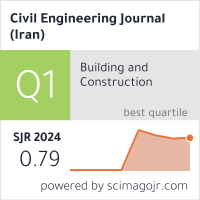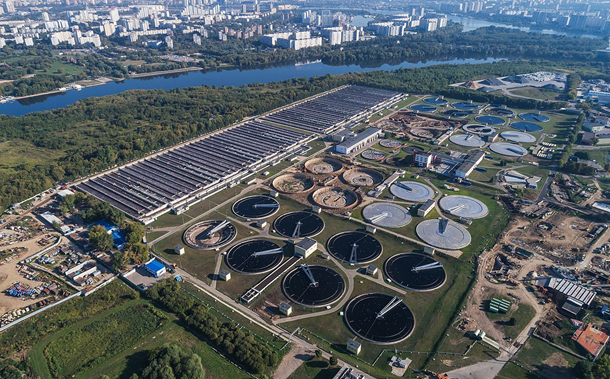Evaluating the Performance of Right Turn Lanes at Signalized Intersection Using Traffic Simulation Model
Downloads
Doi:10.28991/CEJ-2024-010-07-010
Full Text:PDF
Downloads
[2] Fabianova, J., Michalik, P., Janekova, J., & Fabian, M. (2020). Design and evaluation of a new intersection model to minimize congestions using VISSIM software. Open Engineering, 10(1), 48–56. doi:10.1515/eng-2020-0019.
[3] Adams, J. C., & Hummer, J. E. (1993). Effects of U-turns on left-turn saturation flow rates. Transportation Research Record, 1398, 90-100.
[4] Tsao, S., & Chu, S. (1995). A study on adjustment factors for U-turns in left-turn lanes at signalized intersections. Journal of Advanced Transportation, 29(2), 183-192. doi:10.1002/atr.5670290204.
[5] Liu, P., Lu, J., Fan, J., Pernia, J., & Sokolow, G. (2005). Effects of U-Turns on Capacities of Signalized Intersections. Transportation Research Record: Journal of the Transportation Research Board, 1920, 74–80. doi:10.3141/1920-09.
[6] Hutchinson, P., & Woolley, J. (2008). Should U-turns be permitted at signalised intersections?. CASR Report Series: CASR017, Centre for Automotive Safety Research, Kent Town, Australia.
[7] Liu, P., Lu, J. J., Zhou, H., & Sokolow, G. (2007). Operational effects of U-turns as alternatives to direct left-turns. Journal of Transportation Engineering, 133(5), 327–334. doi:10.1061/(ASCE)0733-947X(2007)133:5(327).
[8] Zheng, C., Liu, P., Lu, J. J., & Chen, H. (2009). Evaluating the effect effects of U-turns on level of service of signalized intersections using synchro and SimTraffic. IEEE Intelligent Vehicles Symposium, Xi'an, China. doi:10.1109/ivs.2009.5164412.
[9] Nage, P. U., & Khode, B. V. (2018). Delay Analysis of Vehicles at Signalized Intersection for Assessing the Need and Utility of Signal Redesigning. International Journal of Innovations in Engineering and Science, 3(5), 121–124.
[10] Hellinga, B., & Abdy, Z. (2008). Signalized intersection analysis and design: Implications of day-to-day variability in peak-hour volumes on delay. Journal of Transportation Engineering, 134(7), 307–318. doi:10.1061/(ASCE)0733-947X(2008)134:7(307).
[11] Essa, M., & Sayed, T. (2016). A comparison between PARAMICS and VISSIM in estimating automated field-measured traffic conflicts at signalized intersections. Journal of Advanced Transportation, 50(5), 897–917. doi:10.1002/atr.1381.
[12] Dureja, A., Dureja, A., Kumar, V., & Sabharwal, S. (2024). Combining Digital Twin Technology and Intelligent Transportation Systems for Smart Mobility. In Transforming Industry using Digital Twin Technology, 281-296. Springer Nature, Cham, Switzerland. doi:10.1007/978-3-031-58523-4_14.
[13] Rahimi, A. M., Dulebenets, M. A., & Mazaheri, A. (2021). Evaluation of microsimulation models for roadway segments with different functional classifications in Northern Iran. Infrastructures, 6(3), 46. doi:10.3390/infrastructures6030046.
[14] Singh, M. K., & Ramachandra Rao, K. (2023). Simulation of Signalized Intersection with Non-Lane-Based Heterogeneous Traffic Conditions Using Cellular Automata. Transportation Research Record, 03611981231211317. doi:10.1177/03611981231211317.
[15] Kotkar, S., & Bhorkar, M. (2023). Junction improvement on urban corridor using traffic simulation model – A review. AIP Conference Proceedings, Chennai, India. doi:10.1063/5.0133847.
[16] Alkaissi, Z. A., Ismael, A., & Wissam, A. (2023). Prediction Model of Lane Change Frequency based on Traffic Characteristics of Urban Street. Association of Arab Universities Journal of Engineering Sciences, 30(2), 7-16.
[17] Al-Kaissi, Z. A. (2017). Travel Time Prediction Models and Reliability Indices for Palestine Urban Road in Baghdad City. Al-Khwarizmi Engineering Journal, 13(3), 120–130. doi:10.22153/kej.2017.01.007.
[18] Alkaissi, Z. A., & Hussain, R. Y. (2020). Delay Time Analysis and Modelling of Signalised Intersections using Global Positioning System (GPS) Receivers. IOP Conference Series: Materials Science and Engineering, 671(1), 012110. doi:10.1088/1757-899x/671/1/012110.
[19] Alkaissi, Z. A., Kadhim, A. J., & Ali, S. (2020). Discharge Headway Time Distribution Model on Congested Signalized Intersections and their Operation Management: A Case Study in Baghdad City. IOP Conference Series: Materials Science and Engineering, 870(1), 012091. doi:10.1088/1757-899x/870/1/012091.
[20] Alkaissi, Z. A. (2022). Traffic simulation of continuous flow intersection with displaced left-turn: a case study. Journal of Engineering and Applied Science, 69(1), 39. doi:10.1186/s44147-022-00091-7.
- Authors retain all copyrights. It is noticeable that authors will not be forced to sign any copyright transfer agreements.
- This work (including HTML and PDF Files) is licensed under a Creative Commons Attribution 4.0 International License.![]()















